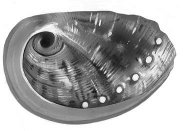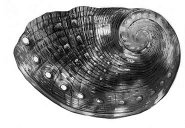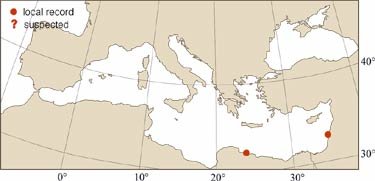

|
Relevant Synonyms
Misidentification
|
|
| drawing: Tuvia Kurz |
|
SHORT
DESCRIPTION
color :
shell brownish to greenish with irregular mottles outside, whitish to brownish along a ridge bordering the aperture, nacreous inside.
common size :
30 mm. |
DISTINGUISHING CHARACTERISTICS
BIOLOGY / ECOLOGY
habitat :
under rocks in shallow water; intertidally in the Indian Ocean. |
|
1st
Mediterranean record
|

|
|
DISTRIBUTION
|
ESTABLISHMENT SUCCESS
speculated reasons for success :
|
|
|
MODE OF
INTRODUCTION |
IMPORTANCE TO
HUMANS |
|
KEY
REFERENCES
|
|
|
 Haliotis jousseaumi Mabille, 1888
Haliotis jousseaumi Mabille, 1888